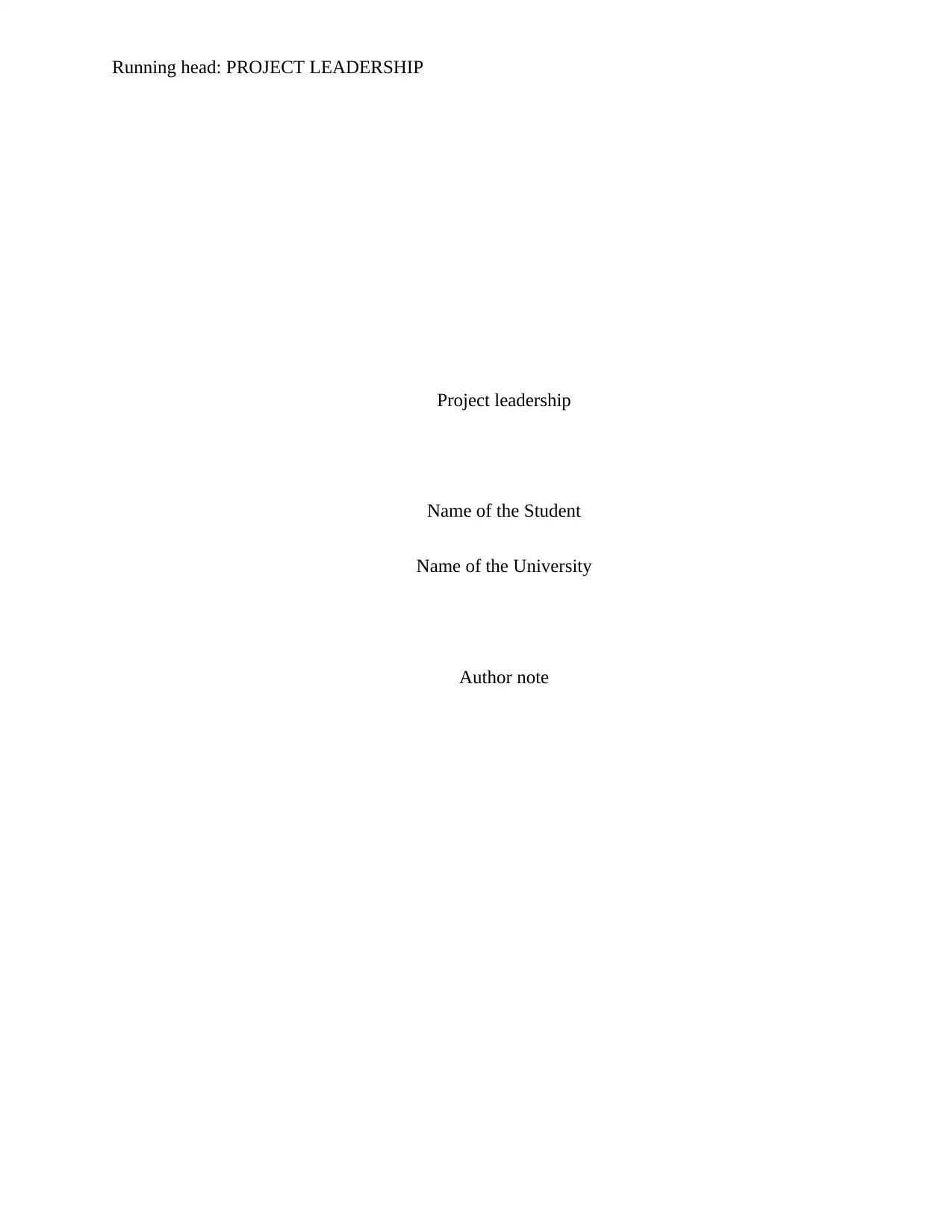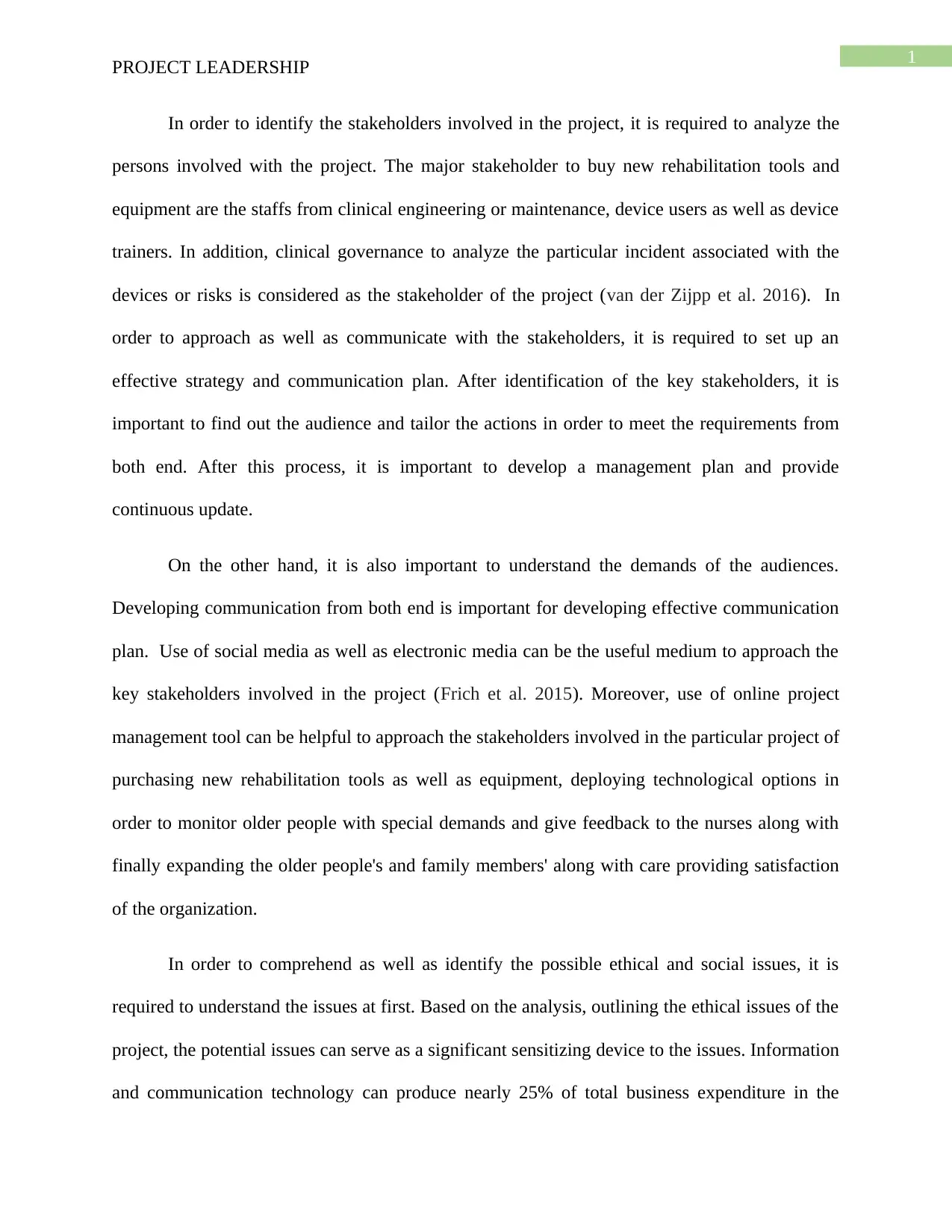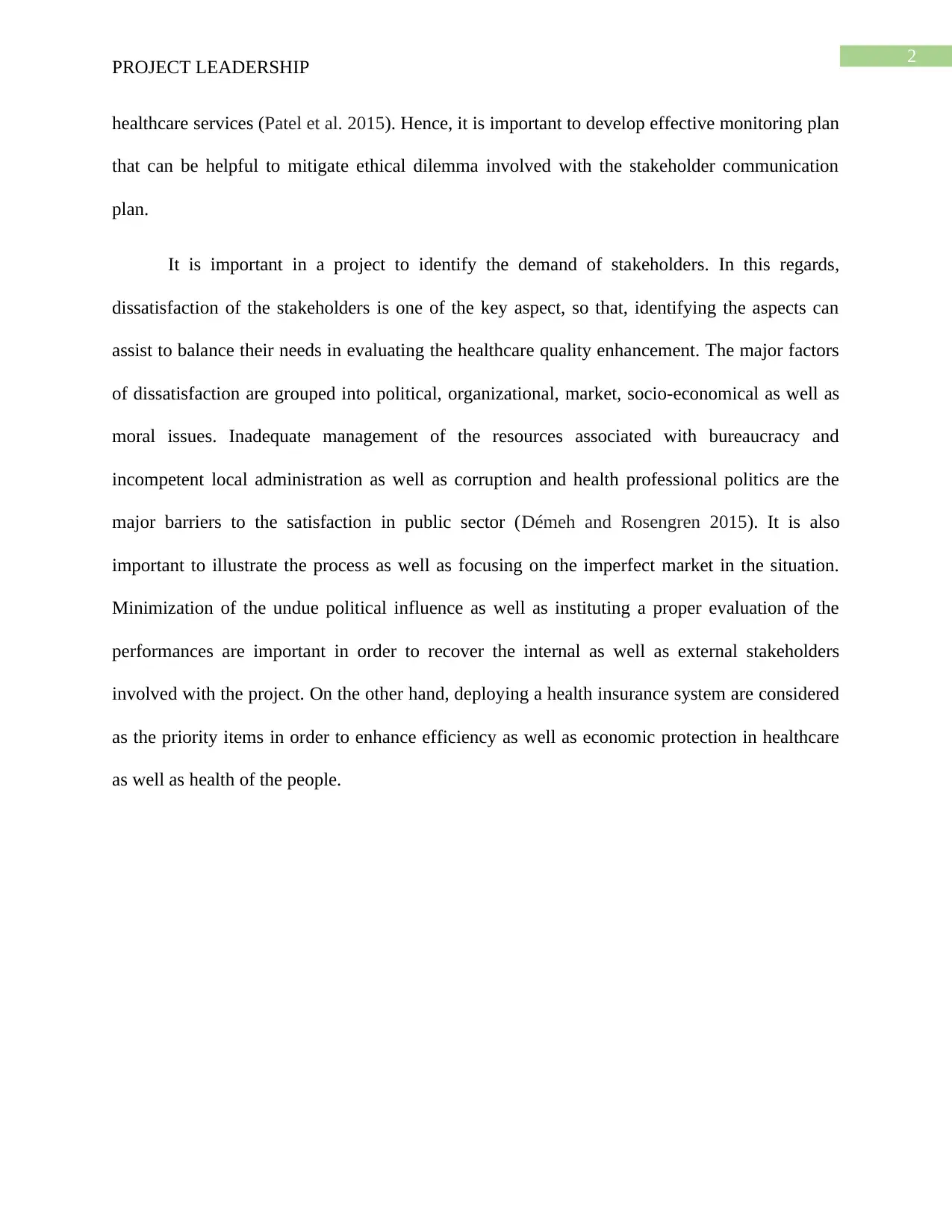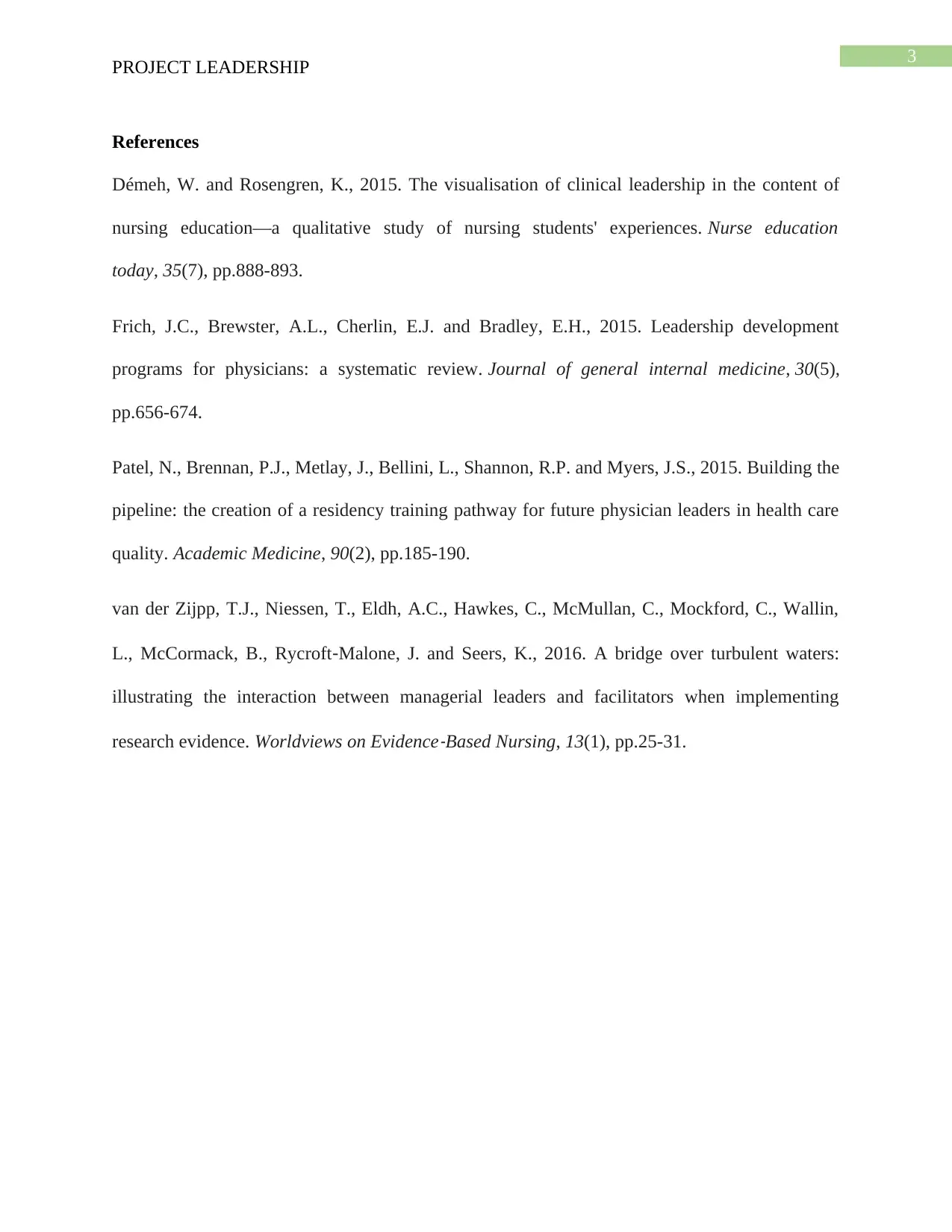Project Leadership: Stakeholder Communication and Ethical Analysis
VerifiedAdded on 2023/06/04
|4
|823
|151
Report
AI Summary
This report delves into the critical aspects of project leadership, emphasizing the importance of stakeholder communication and ethical considerations. It identifies key stakeholders in a project involving the acquisition of new rehabilitation tools and equipment, highlighting the roles of clinical engineering staff, device users, trainers, and clinical governance. The report underscores the need for a well-defined communication plan to effectively engage stakeholders, considering their diverse demands and preferences, suggesting the use of social media and online project management tools. Furthermore, it addresses potential ethical and social issues arising from the increasing reliance on information and communication technology in healthcare, particularly concerning stakeholder communication. The report also examines factors contributing to stakeholder dissatisfaction, such as political, organizational, and socio-economic issues, advocating for measures like minimizing political influence, instituting performance evaluations, and deploying health insurance systems to enhance efficiency and stakeholder satisfaction. The document concludes by referencing relevant studies on clinical leadership, physician leadership development, and evidence-based nursing implementation.
1 out of 4











![[object Object]](/_next/static/media/star-bottom.7253800d.svg)